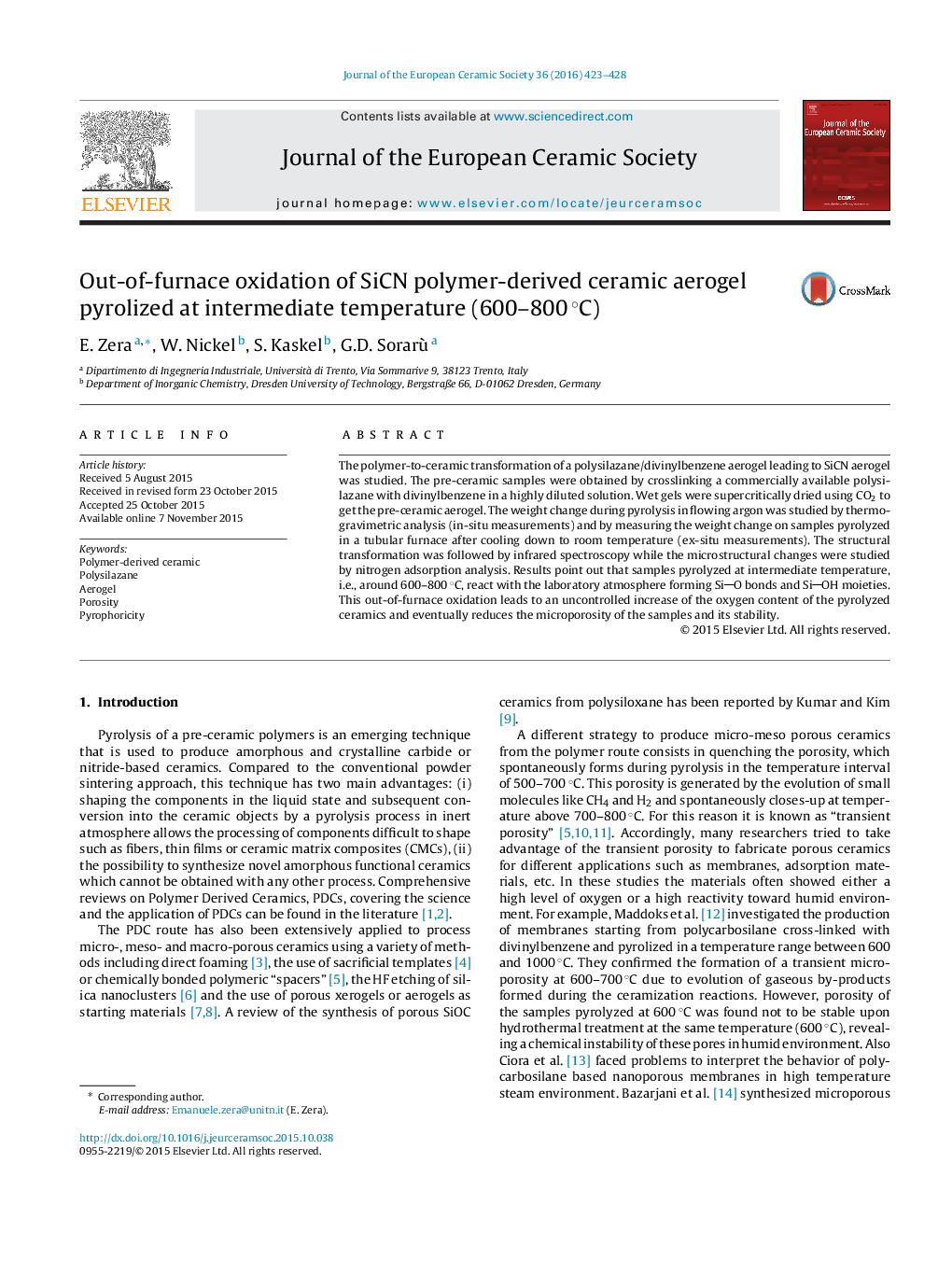| Article ID | Journal | Published Year | Pages | File Type |
|---|---|---|---|---|
| 10629393 | Journal of the European Ceramic Society | 2016 | 6 Pages |
Abstract
The polymer-to-ceramic transformation of a polysilazane/divinylbenzene aerogel leading to SiCN aerogel was studied. The pre-ceramic samples were obtained by crosslinking a commercially available polysilazane with divinylbenzene in a highly diluted solution. Wet gels were supercritically dried using CO2 to get the pre-ceramic aerogel. The weight change during pyrolysis in flowing argon was studied by thermogravimetric analysis (in-situ measurements) and by measuring the weight change on samples pyrolyzed in a tubular furnace after cooling down to room temperature (ex-situ measurements). The structural transformation was followed by infrared spectroscopy while the microstructural changes were studied by nitrogen adsorption analysis. Results point out that samples pyrolyzed at intermediate temperature, i.e., around 600-800 °C, react with the laboratory atmosphere forming SiO bonds and SiOH moieties. This out-of-furnace oxidation leads to an uncontrolled increase of the oxygen content of the pyrolyzed ceramics and eventually reduces the microporosity of the samples and its stability.
Related Topics
Physical Sciences and Engineering
Materials Science
Ceramics and Composites
Authors
E. Zera, W. Nickel, S. Kaskel, G.D. Sorarù,
